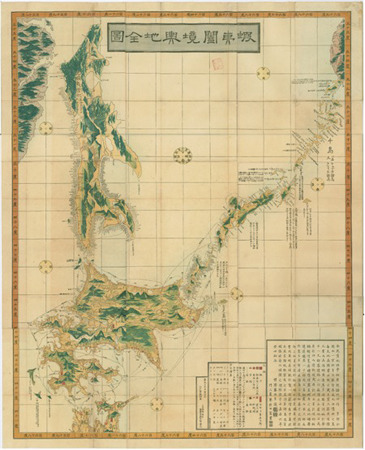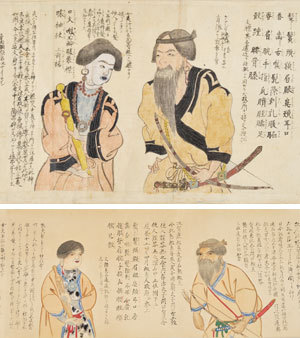Your gateway to endless inspiration
Ainu - Blog Posts


El clan Nanbu tenía un fuerte. ¿Qué es un daimyō? La gama que los samuráis ganaron más poder son los señores feudales, el sitio histórico de shojujitate fue la residencia del clan Nanbu, construido en la orilla norte del río mabuchi en la prefectura de Aomori. Estaban ubicados en el punto estratégico de comunicación. - Sin embargo, el castillo estaba cerca de los caminos oshu kaido y kazunokaido, el lugar estaba limitado por montañas al este-oeste y norte-sur, los 300 a 250 m la dimensión del fuerte era de aproximadamente 90.000 metros cuadrados. Como resultado de la excavación que el arqueólogo llevó a cabo hasta el edificio de pilares del escape más grande de la región de tohoku, se extiende 18 tramos de 36 m de norte a sur de 42 m, la estructura ha sido de dos pisos de altura y los pilares de la puerta de 45 cm la fecha del castillo de 1539 en la era de Teherán. - Cerámica de alta calidad y artefactos culturales honshu Ainu, se han recuperado más de 4000 tipos de cerámica vidriada medieval dentro del sitio, de los cuales siete décimos son guerras vidriadas chinas. - En resumen, la forma en que se puede discernir a partir de los elementos recuperados en los restos de shojujitate datan de la cultura del período Murumachi y Sengoku en Japón. - - En resumen, la forma en que se puede discernir a partir de los elementos recuperados en los restos de shojujitate datan de la cultura del período Murumachi y Sengoku en Japón. - 南部氏には砦がありました。大名とは?武士が勢力を拡大した範囲は領主領であり、青森県の馬渕川北岸に建てられた南部藩の居城であった正寿寺立史跡は交通の要所に位置していました。 しかし、城は奥州街道や鹿角街道に近く、東西南北は山に囲まれた場所でした。 300 から 250 m の砦の寸法は約 90,000 平方メートルでした。 18スパン36m南北42mに及ぶ東北地方最大級の脱獄の柱建造物を考古学者が発掘調査した結果、2階建てで門柱45cmの城郭時代の1539年テヘラン時代。 高品質の陶磁器と本州アイヌの文化的遺物、4000 種類以上の中世の釉薬を使った陶磁器が遺跡内から回収されており、そのうち 10 分の 7 が中国の釉薬を使った陶器です。 手短に言えば、正寿寺立遺跡の出土品から、室町時代と戦国時代の文化が日本に伝わる様子がわかる。 - The Nanbu clan had a fort. What is a daimyo? The range that the samurais won more power are the sir feudal, the shojujitate historic site was the residence of the Nanbu clan, built in the north bank of the mabuchi river in the Aomori prefecture were located in the strategic point of communication. However the castle was near the oshu kaido and Kazunokaido roads, the place was limited by mountains to the east-west and north - south; the 300 to 250 m the dimension of the fort was approximately 90.000 square meters. As a result of excavation the archaeologist conducted to the pillar building of the largest escape of the tohoku region extending 18 spans 36 m north-south spans 42 m, the structure has been two stories tall and gate pillars 45 cm the castle date of 1539 in the Tehran era. High quality ceramics and honshu Ainu cultural artifacts, more than 4000 types of medieval glazed ceramics have been recovered from within the site of which seven tenth are Chinese glazed warres. In short the manner it can be discerned from the items recovered at the shojujitate remains date Murumachi and Sengoku period culture to Japan. ソース写真/source photo: https://www.town.aomori-nanbu.lg.jp/page/1543.html





Capítulo 1: Introducción a los Emishi. Sean bienvenidos amantes del mundo japonés a una nueva publicación, en esta ocasión vamos a hablar sobre los emishi dicho esto pónganse cómodos que empezamos. - Para empezar, el término emishi hace referencia a todas las tribus y pueblos que vivían y que todavía viven al norte de Japón es decir la mitad norte de Tohoku, incluida hokkaido a este pueblo se le denominaba y se le denomina todavía a día de hoy Ainu, considerados los primeros pobladores del archipiélago a lo largo del siglo XVI hubo una serie de campañas militares para controlar dicho territorio aunque ya en el siglo VII siglo VIII después de Cristo durante el apogeo del clan yamato crearon una serie de fortalezas al norte para mantenerlos a raya. De hecho eran denominados bárbaros del norte que además se revelarán en más de una ocasión bajo el dominio japonés sin resultado alguno, actualmente se les da un reconocimiento a esta cultura, que en el pasado no lo tuvieron, como por ejemplo hay un museo dedicado a ellos y a su cultura. - Espero que os haya gustado y nos vemos en próximas publicaciones que pasen una buena semana. - 第 1 章: 蝦夷の紹介。 日本世界を愛する皆さん、新しい出版物にようこそ。今回は蝦夷について話します。とはいえ、気を楽にして始めましょう。 - まず、蝦夷という用語は、日本の北、つまり北海道を含む東北の北半分に住んでいた、そして今も住んでいるすべての部族と民族を指し、この民族は現在もアイヌと呼ばれていると考えられています。 16 世紀を通じてこの列島に最初に定住した人々は、その領土を支配するために一連の軍事作戦を行ったが、すでに 7 世紀から 8 世紀にはヤマト氏の全盛期に、彼らは北に一連の要塞を築き、領土を維持していた。湾。実際、彼らは北の野蛮人と呼ばれていましたが、日本の統治下でも何の成果も得られずに何度も姿を現しましたが、現在では、この文化は、例えば、そこでは過去にはなかった認識を与えられています。は彼らとその文化に特化した博物館です。 - 気に入っていただければ幸いです。今後の投稿でお会いしましょう。良い一週間をお過ごしください。 - Chapter 1: Introduction to the Emishi. Welcome lovers of the Japanese world to a new publication, this time we are going to talk about the emishi, that being said, make yourself comfortable and let's get started. - To begin with, the term Emishi refers to all the tribes and peoples who lived and still live in the north of Japan, that is, the northern half of Tohoku, including Hokkaido. This people was called and is still called Ainu today. , considered the first settlers of the archipelago throughout the 16th century there were a series of military campaigns to control said territory although already in the 7th century 8th century AD during the heyday of the Yamato clan they created a series of fortresses to the north to keep them at bay. stripe. In fact, they were called barbarians of the north who also revealed themselves on more than one occasion under Japanese rule without any result. Currently, this culture is given recognition, which in the past they did not have, such as, for example, there is a museum dedicated to them and their culture. - I hope you liked it and see you in future posts, have a good week.